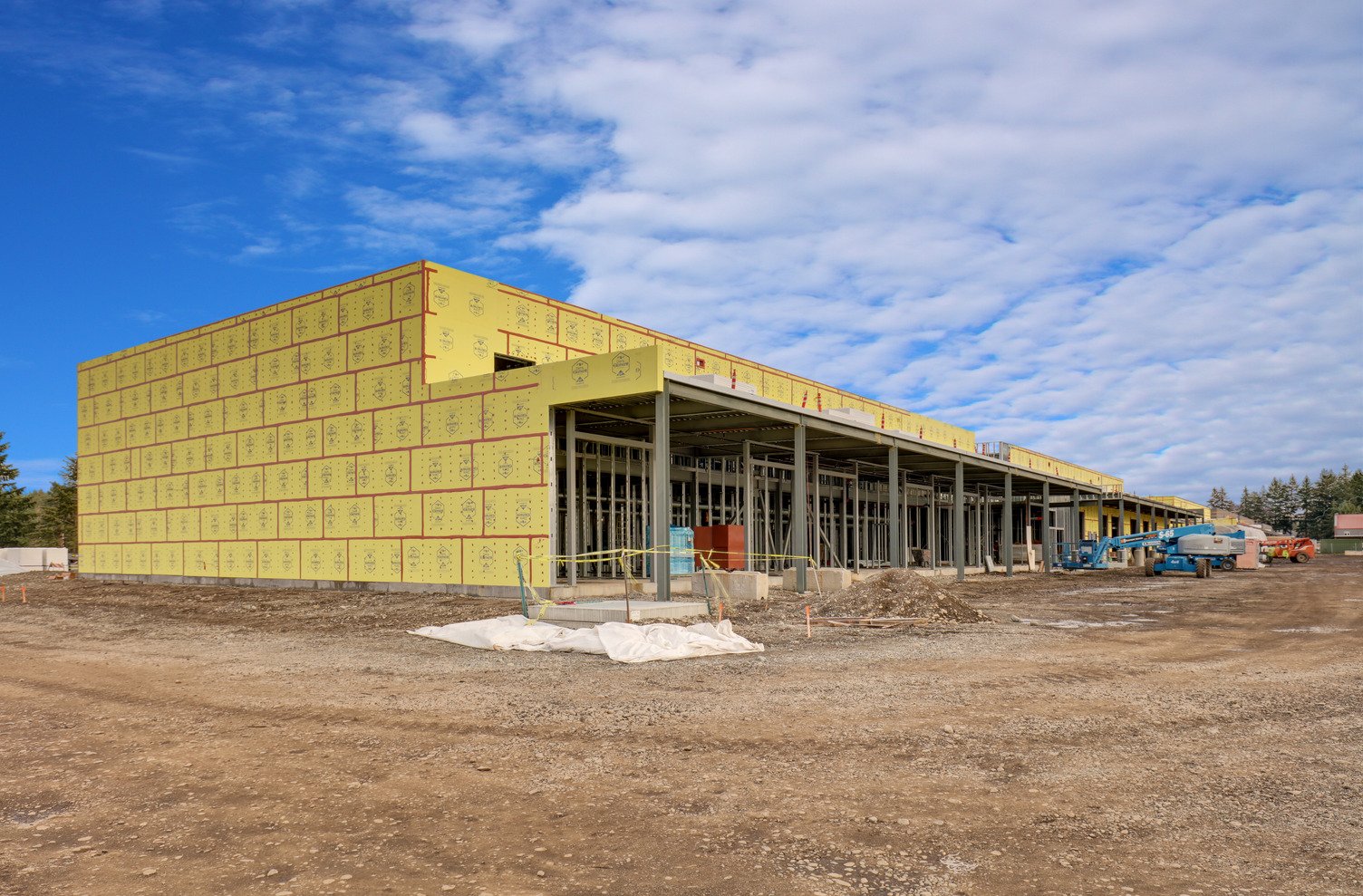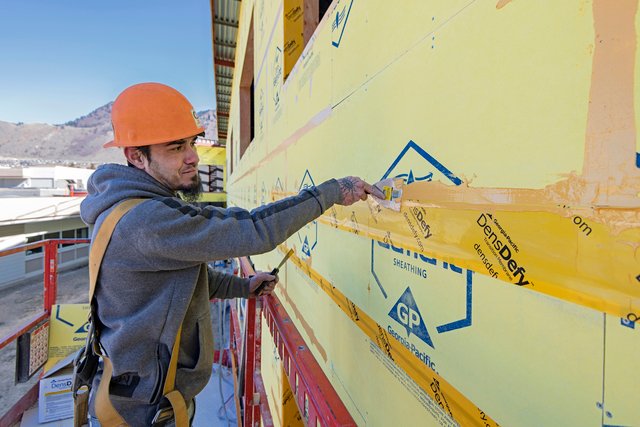Protection From The Elements: Air And Water Barrier Innovations

What water barrier used to be made with recycled cotton? It’s the only water-resistive barrier that the IBC and IRC building codes list by name. It started out a century ago being used on roofs; today, it is composed of corrugated paper and sawdust. It’s felt, and it’s still used in the building envelope today. From recycled cotton to asphalt to its present composition, this water barrier has lived for over a century. It wasn’t until the 1920s that recycled cotton became too expensive and spurred innovation.
While the innovation cycle in air and water barriers hasn’t kept pace with the exponential nature of Moore’s Law in computing—where the number of transistors on an integrated chip double every two years – there have been dramatic advancements in air and water barrier solutions worth noting. Retro has its place, but not when it comes to protecting the building envelope. Where does your specified product fit on the innovation timeline?
Wrap And Felt: An Installation Story
This system is cost-effective, simple to install, and works as a WRB-AB when installed properly. Building wrap and felt are difficult to seal to create an effective air barrier. It’s also susceptible to blowing off when installations are lengthy. Fasteners can puncture holes in the membrane, allowing moisture and air penetration. If staples or other incorrect installation methods are used, the effectiveness of the WRB-AB is compromised.
Rigid Boardstock: ARB-AB?
This product was first produced as foam rubber in 1929 by researcher Eric Owen of Dunlop Rubber. His initial whipped latex permutation evolved into the polyurethane-based foams of today. If the joints are properly sealed, it may act as insulation, a WRB, and an AB. It’s lightweight, and fast to tape seams. However, it’s easy to puncture and prone to movement. It’s vulnerable to fire and requires special fasteners and washers which must be precisely installed. Only some brands are approved as a WRB-AB.
Self-Adhered Membranes: It Takes Two
These may function as both a WRB and AB, pending installation quality. Fasteners aren’t required; neither is sealing the joints before installation. The issues? Self-adhered membranes require at least a two-person crew. Installation may require a primer, and the membrane can wrinkle or adhere to the substrate poorly, depending on the primer used. The primer application can reduce permeability ratings. Wet or cold conditions also impact installation.
Fluid-Applied Membranes: Fast and Funtional
Can it serve as both WRB and AB? It may when it’s covering sheathing. It’s quick to apply and seals window and door openings well. But mil thickness must be uniform. Otherwise, joints and fasteners—aren’t properly sealed resulting in varying performance. Cold temperatures and wet weather may also restrict application.
Integrated WRB-AB: Science At Work

This is the latest innovation in WRB-AB. There are two approaches: top-coated and integrated core. Top-coated involves coating an existing fiberglass mat with a commercially available fluid applied membrane (WRB-AB) during manufacturing. Integrated core integrates a water-resistive and air barrier between the gypsum core and the fiberglass mat of a gypsum sheathing panel. This is the system Georgia-Pacific invented and launched as DensElement™ Barrier System.
Integrated WRB-AB sheathing systems maintain the same physical and mechanical properties as traditional gypsum sheathing, including fire resistance. They offer reduced installation time, potential material costs savings, and lower labor requirements than building wrap and fluid-applied systems. DensElementTM is the easiest to install, compared to traditional sheathing methods; it can even be installed in wet conditions. The ingenious interweaving of the WRB-AB into the gypsum core is an industry-recognized innovation. Masterspec even created a customized specification section—061656 Air and Water Resistive Sheathing Board—to accurately specify Georgia-Pacific’s unique DensElementTM Barrier System.
Time For A New WRB-AB Specification?
Whatever you’re specifying on the WRB-AB evolutionary spectrum, it’s important that it not only fulfills ABAA and WRB-AB requirements but also provides your customers with time, labor, and potential cost savings. Integrated WRB-AB systems accomplish all three. What’s next in the innovation evolution? Only time will tell.